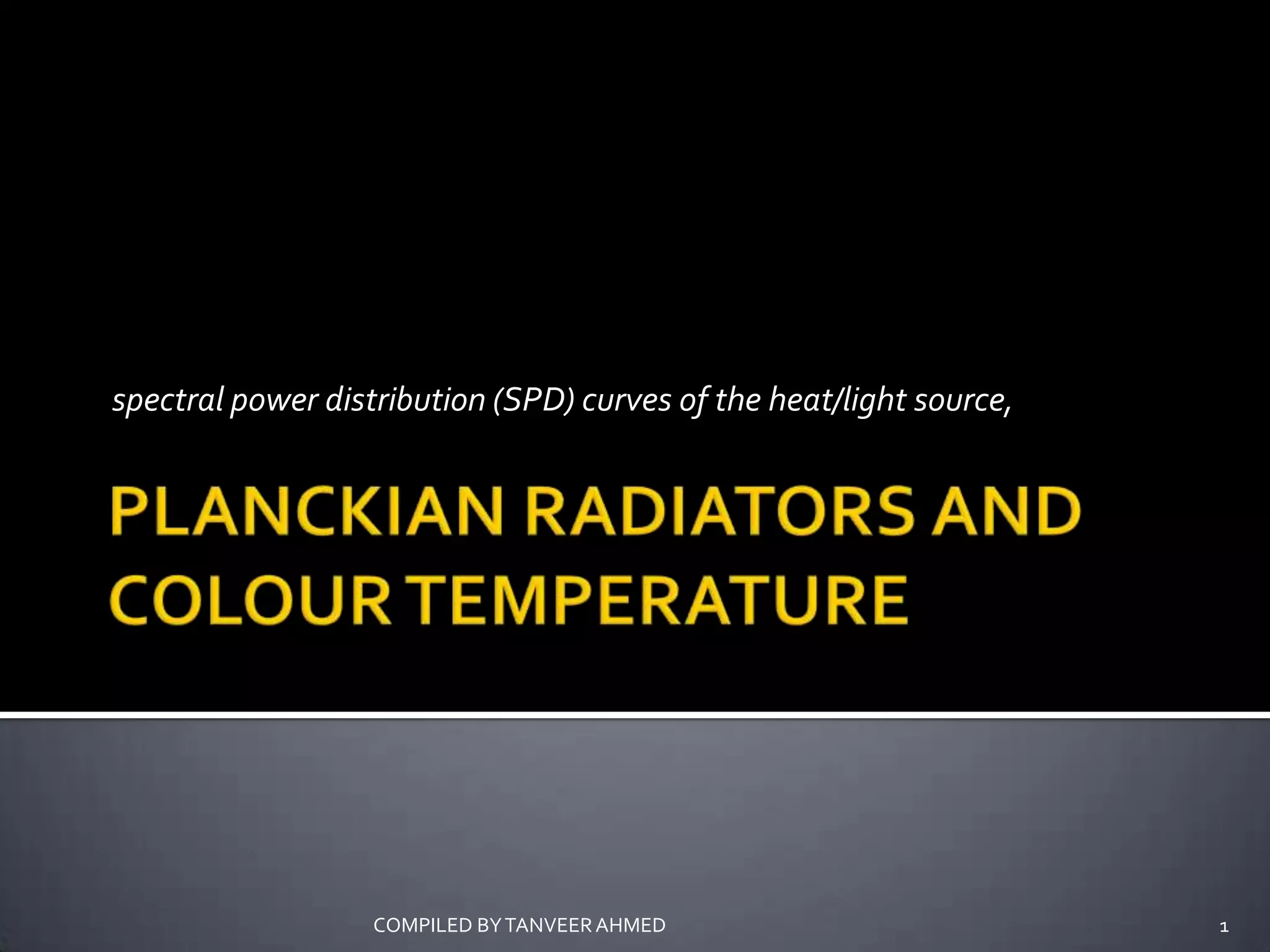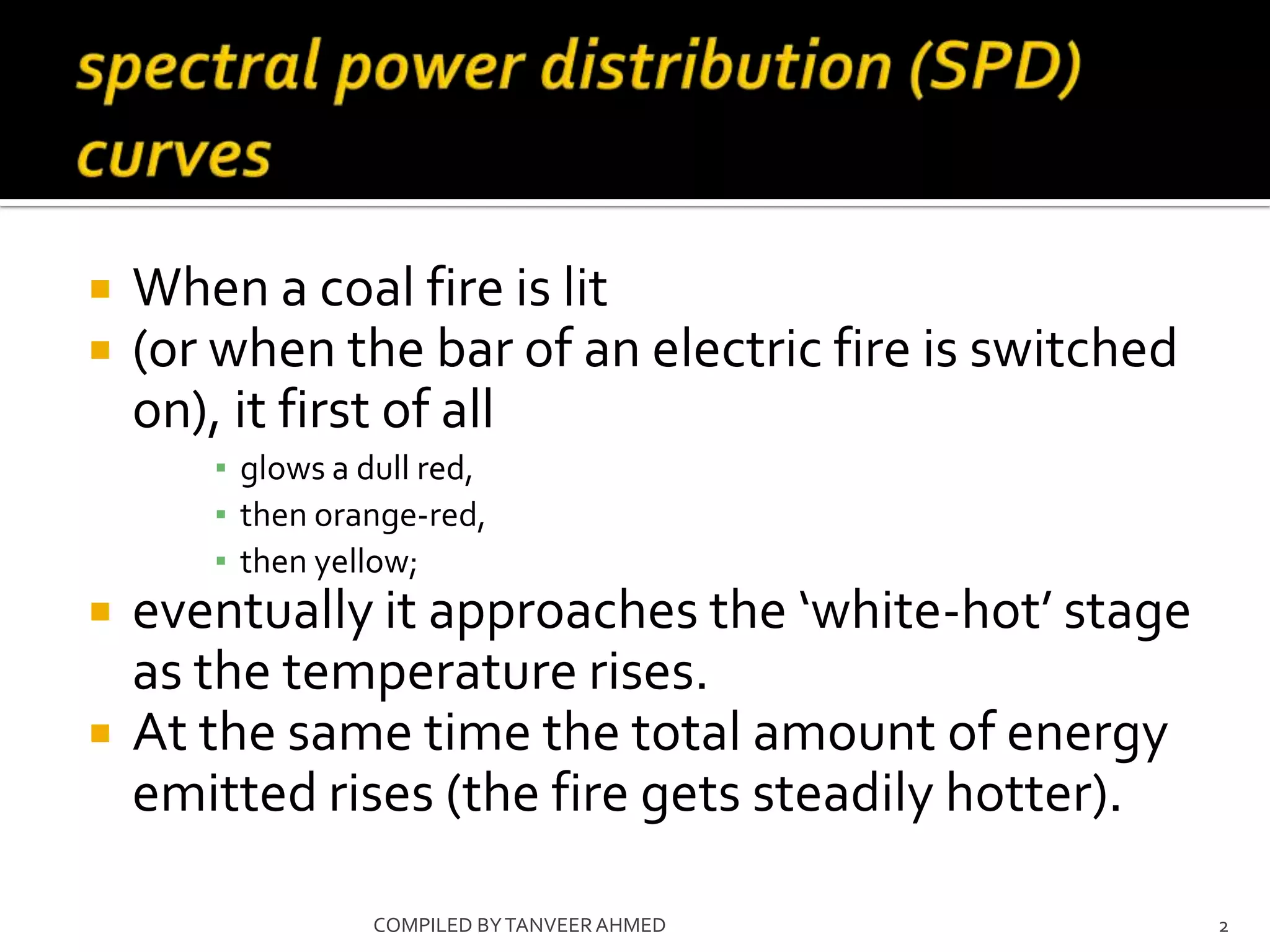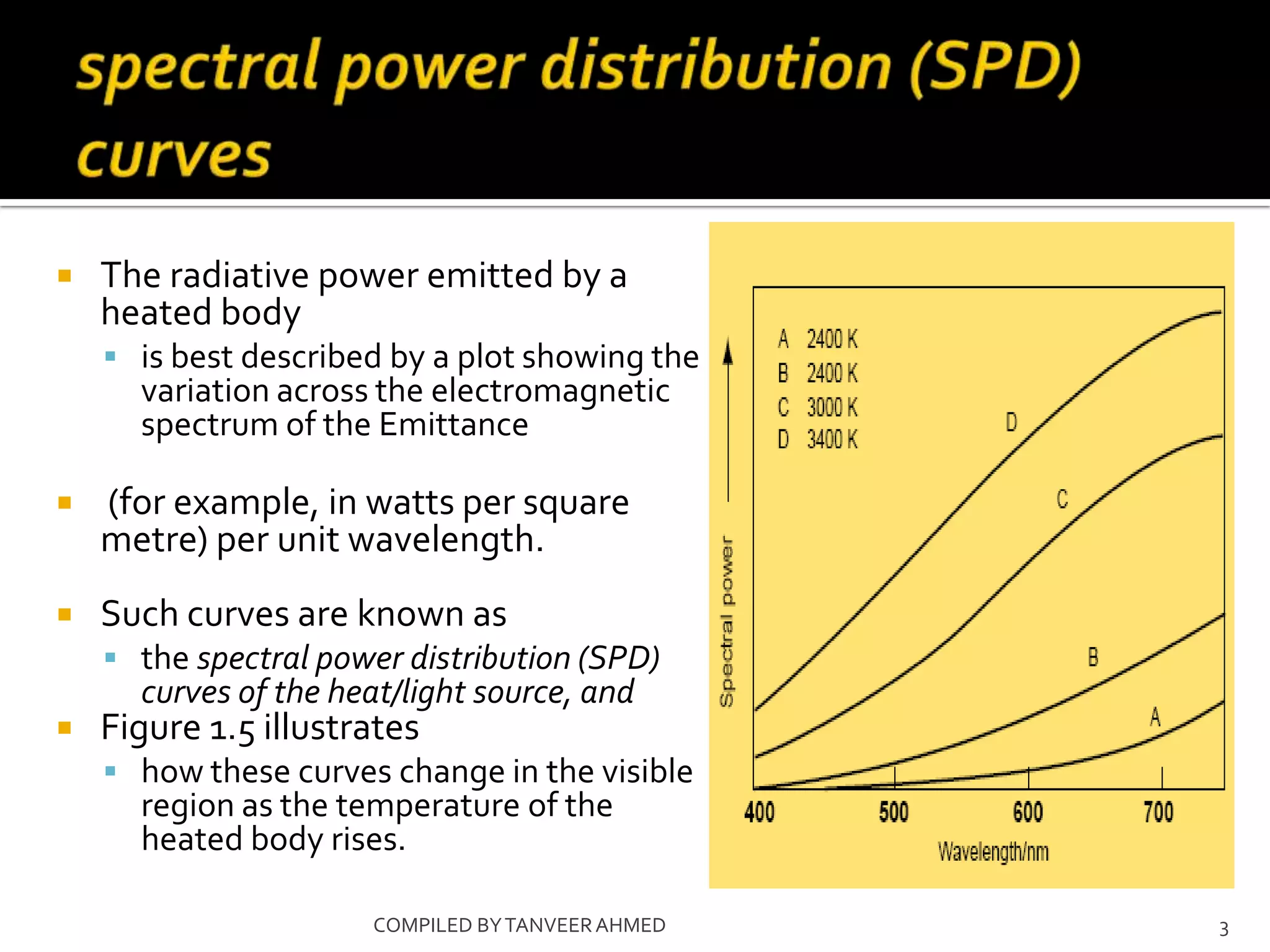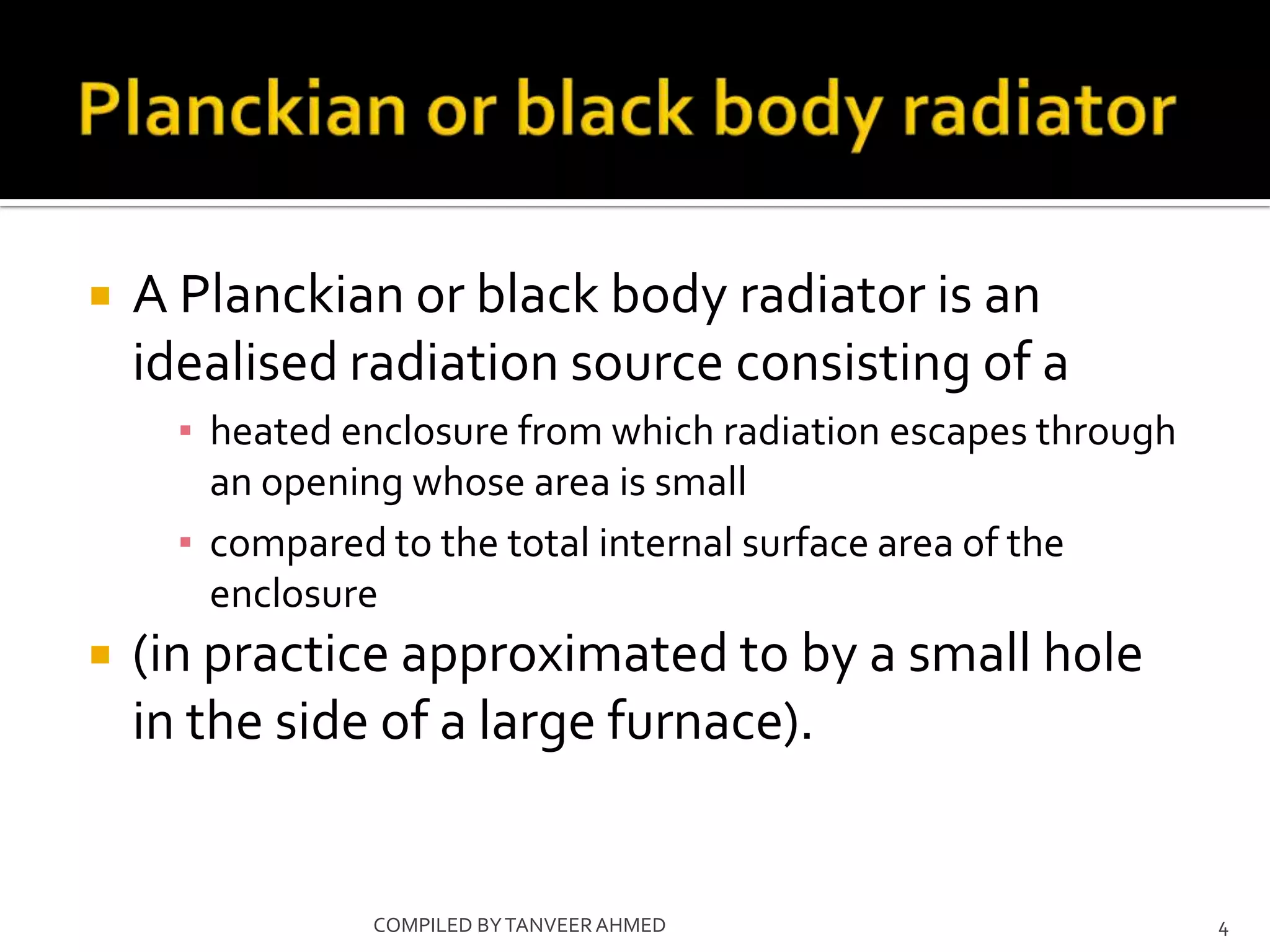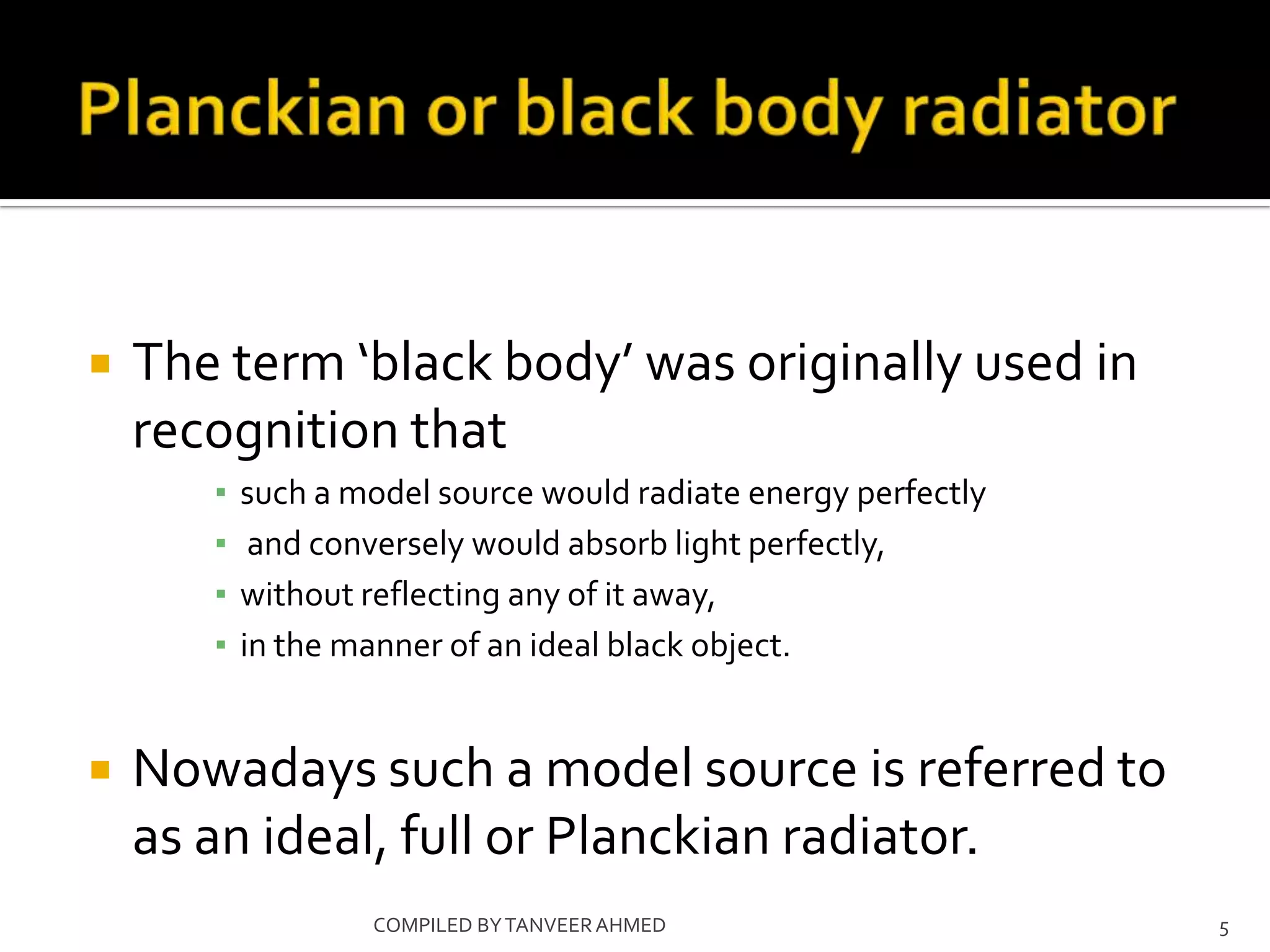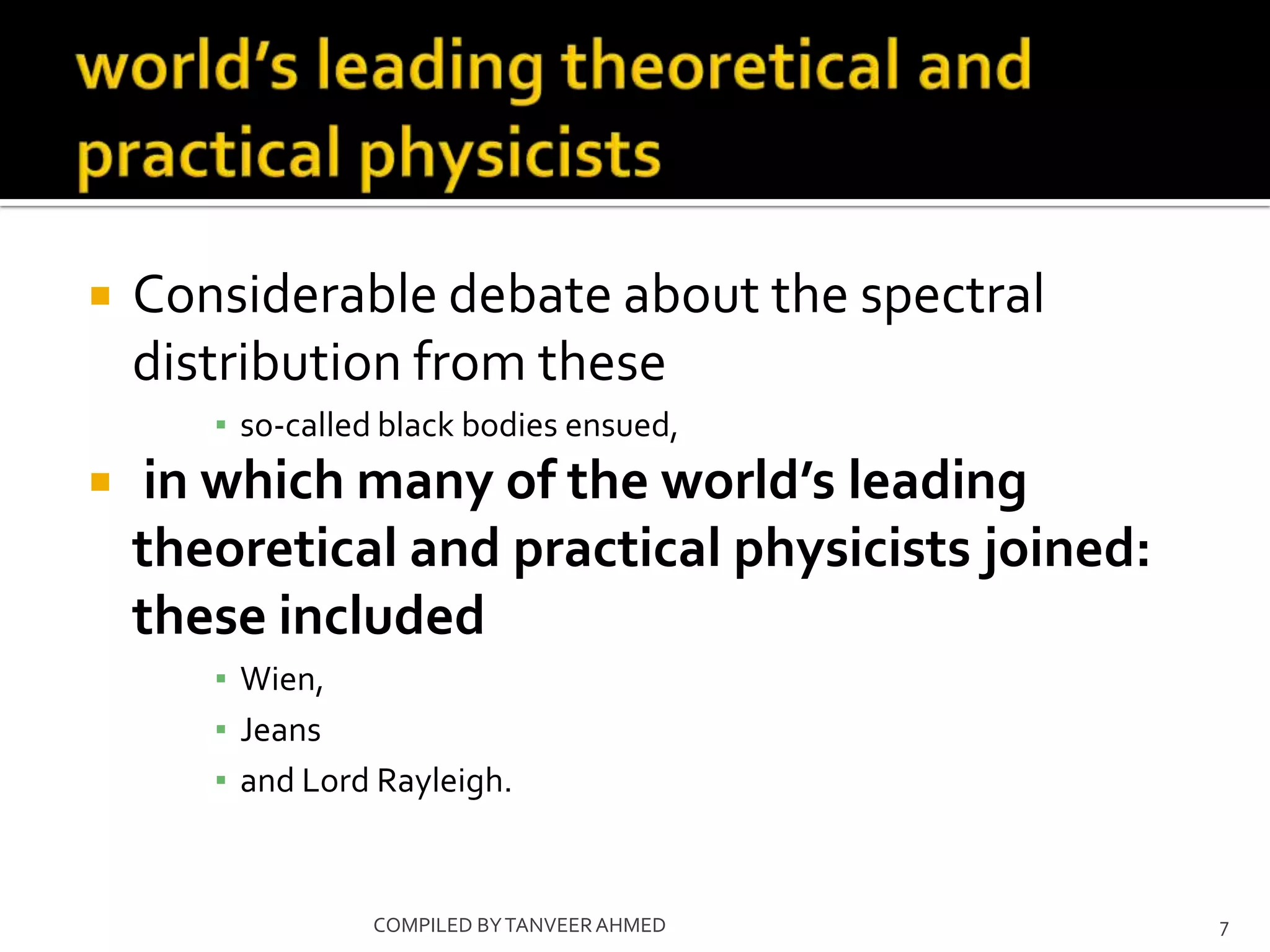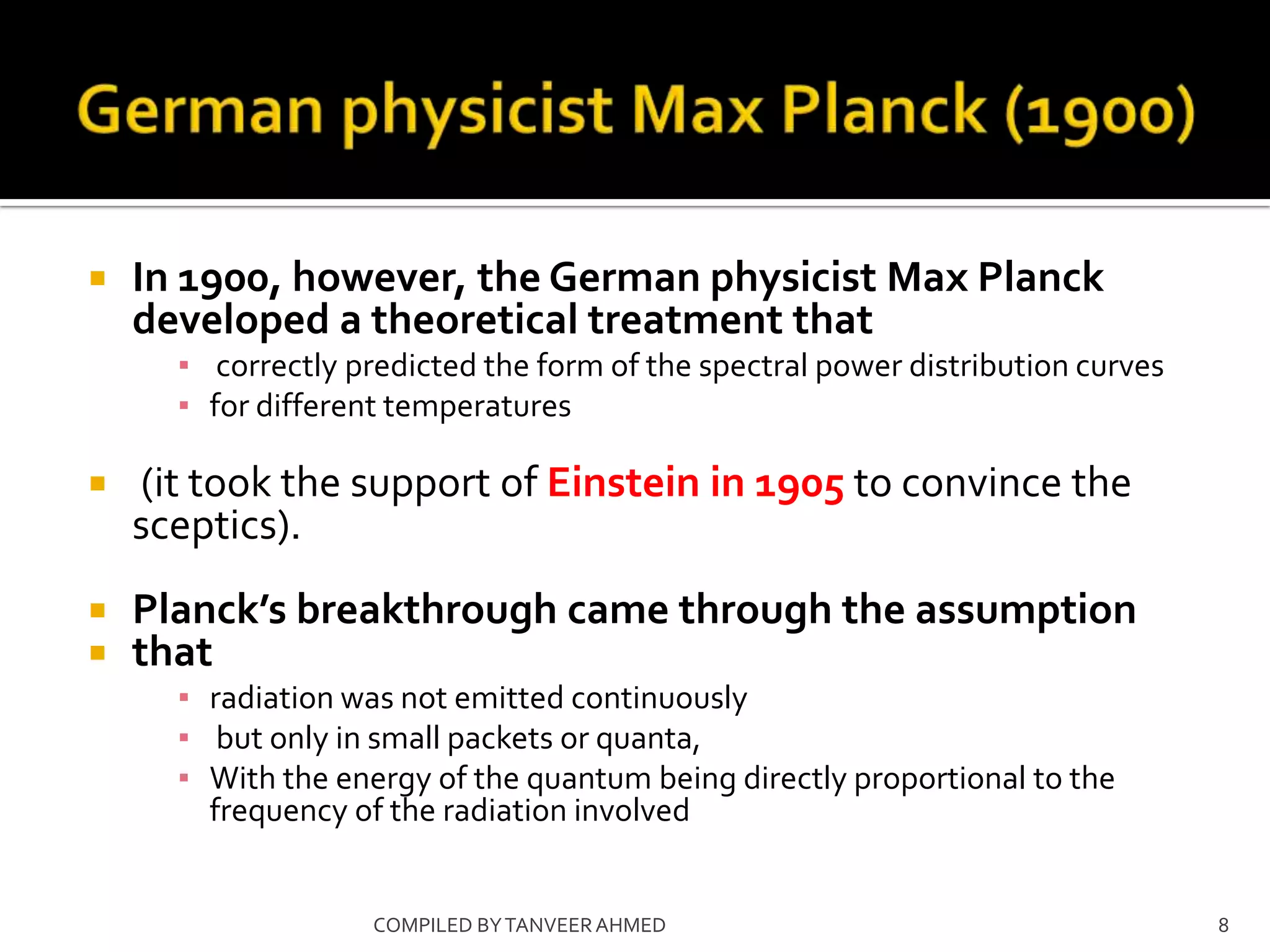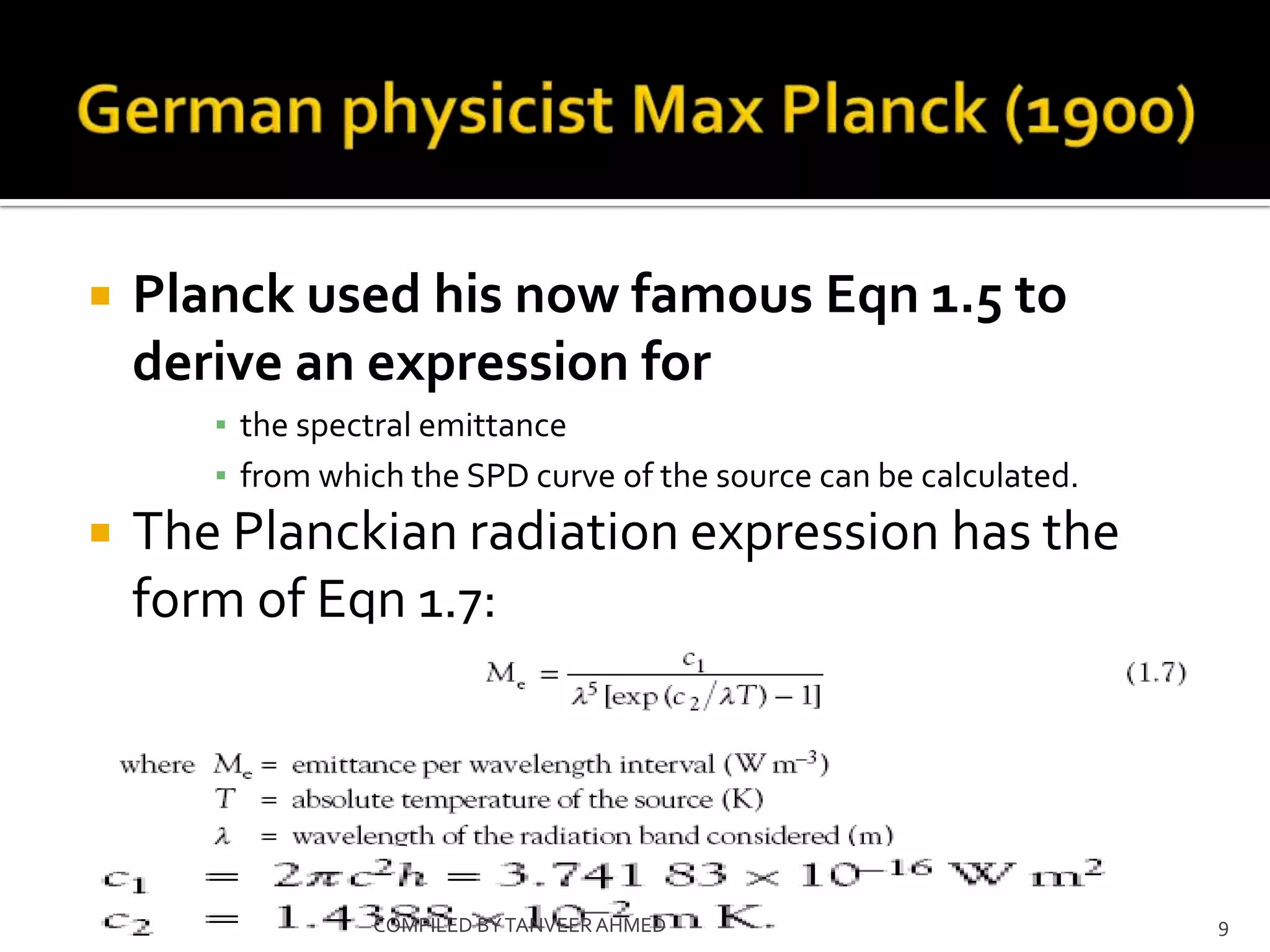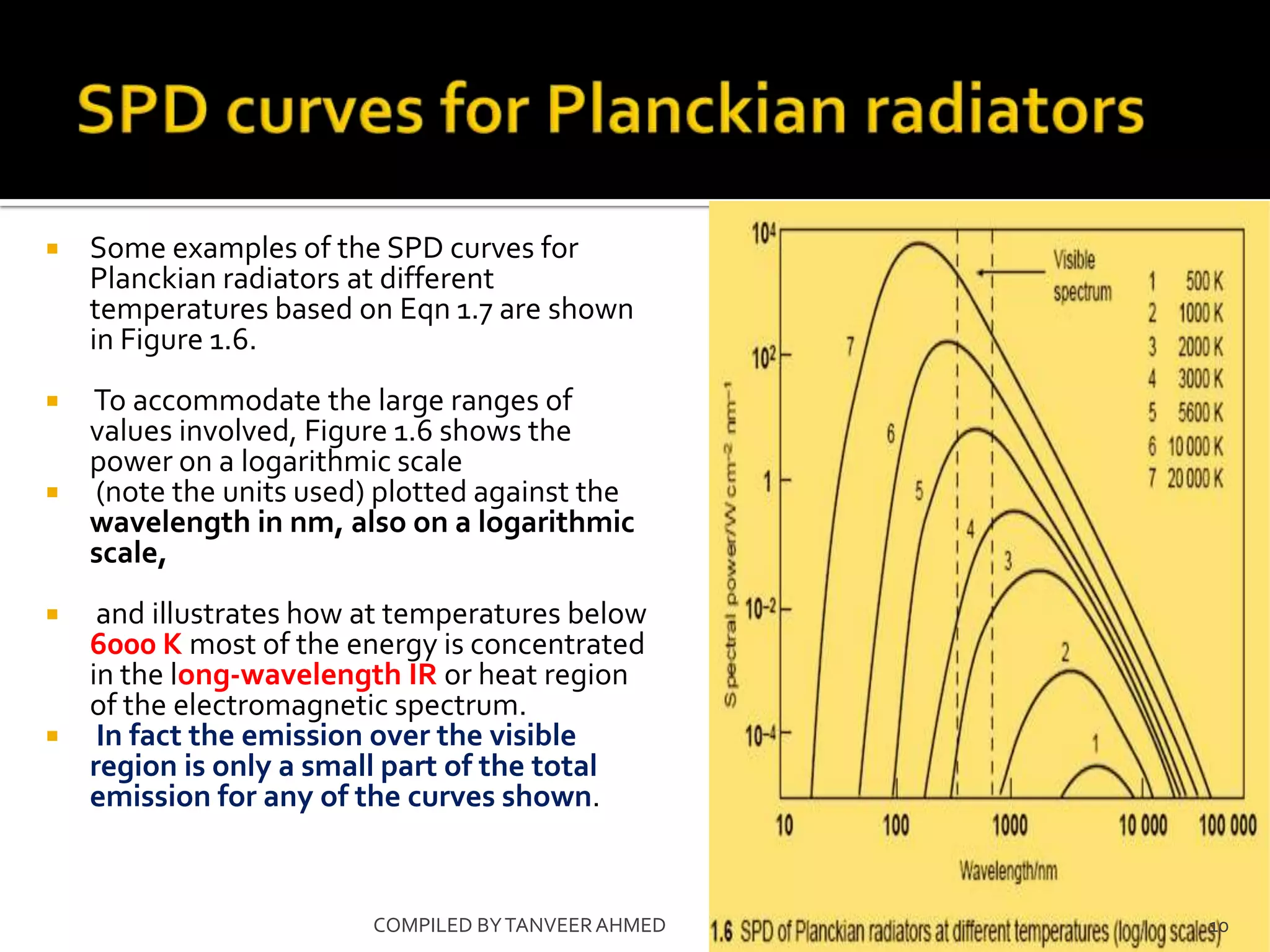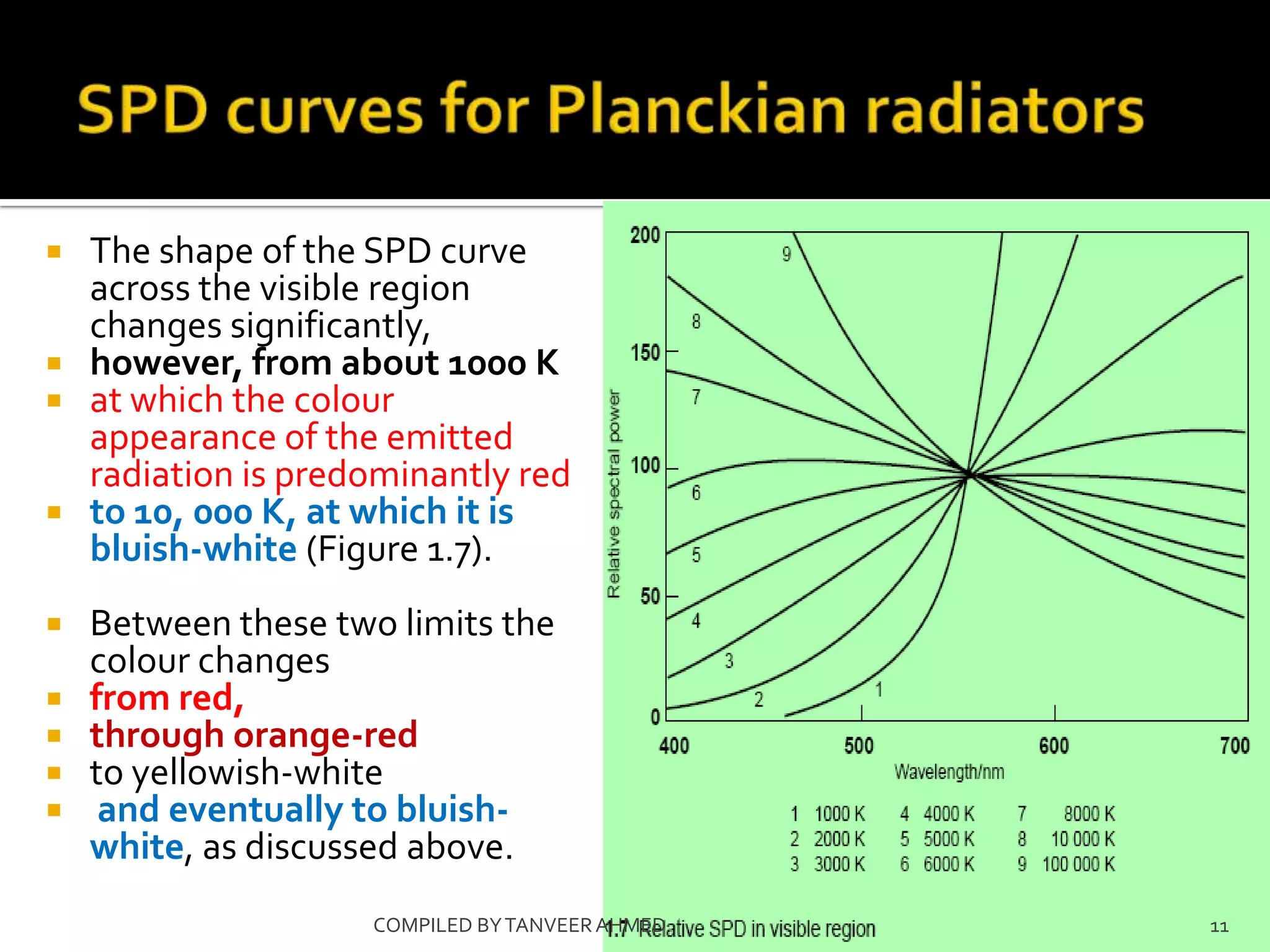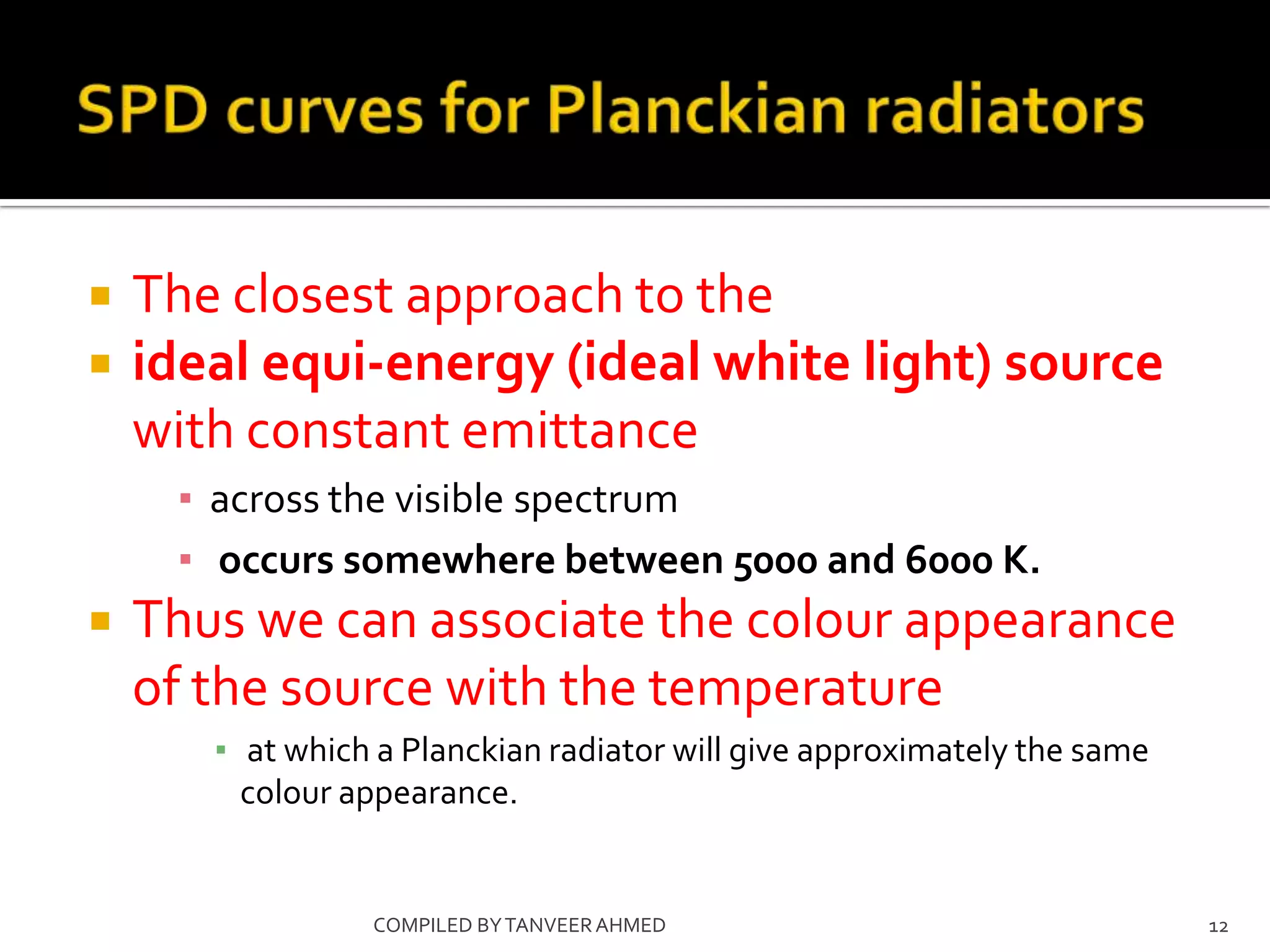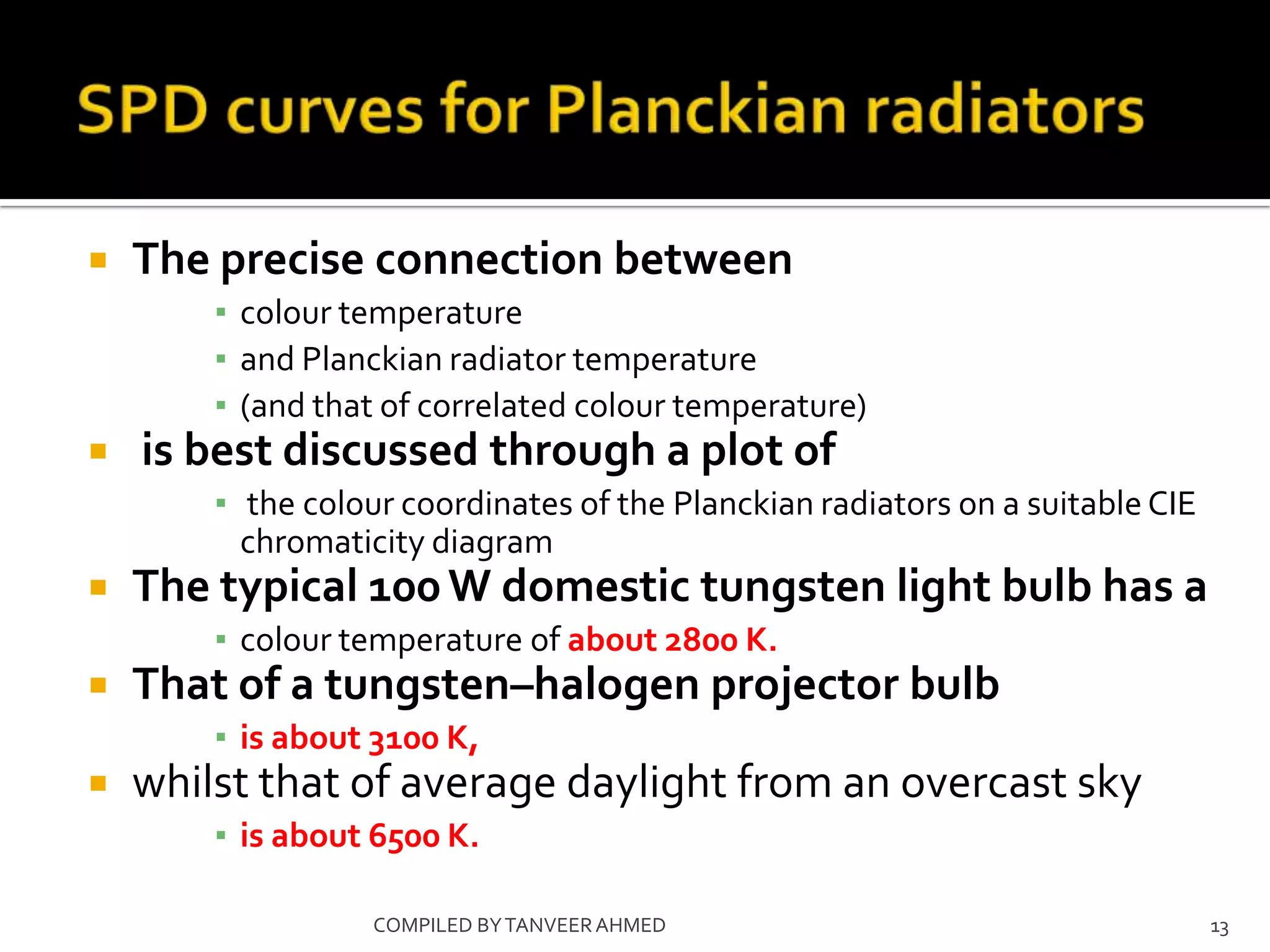The document discusses spectral power distribution (SPD) curves, which describe the variation of emittance across the electromagnetic spectrum for different temperature heat sources. SPD curves change as temperature increases, shifting from red to orange to yellow and eventually white-hot. Max Planck developed a theoretical treatment in 1900 that correctly predicted the form of SPD curves for different temperatures, known as Planckian radiation. The curves show how radiation is concentrated in the infrared at lower temperatures below 6000K and shifts across the visible spectrum from red to blue-white as temperature increases from 1000K to 10,000K.
